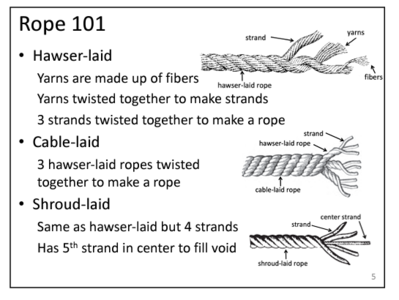Very interesting, will continue to follow your great build
-

Win a Free Custom Engraved Brass Coin!!!
As a way to introduce our brass coins to the community, we will raffle off a free coin during the month of August. Follow link ABOVE for instructions for entering.
-

PRE-ORDER SHIPS IN SCALE TODAY!
The beloved Ships in Scale Magazine is back and charting a new course for 2026!
Discover new skills, new techniques, and new inspirations in every issue.
NOTE THAT OUR FIRST ISSUE WILL BE JAN/FEB 2026
You are using an out of date browser. It may not display this or other websites correctly.
You should upgrade or use an alternative browser.
You should upgrade or use an alternative browser.
ZEEHAEN 1639, 1:37.5, Dutch fluit from Dutch Explorer Abel J. Tasman by Marcus
- Thread starter flying_dutchman2
- Start date
- Watchers 16
-
- Tags
- dutch fluit zeehaen
- Joined
- Mar 11, 2020
- Messages
- 213
- Points
- 143

@Bwb1cdn
Thanks for the interest.
@Jimsky
I want to hear all suggestions and constructive criticism. I will re-measure the diameter of the rope and check what the book says.
@Steef66
The basement has the most room. I have my Boyer here as well.
I use part of the basement as a workshop. The use of power tools is done in the garage for the winter and outside for the other seasons.
Marcus
Thanks for the interest.
@Jimsky
I want to hear all suggestions and constructive criticism. I will re-measure the diameter of the rope and check what the book says.
@Steef66
The basement has the most room. I have my Boyer here as well.
I use part of the basement as a workshop. The use of power tools is done in the garage for the winter and outside for the other seasons.
Marcus
Very good work my friend
I agree with the words by Jim before related to the rope - also for me it looked much to thin when I saw your photo.
And also should be only one per side and not two - If there are really four anchor already fixed to the anchor cables - than I guess only two of the four would be stringed around the windlass - other wise you would move and lift all four anchors in the same time - would be much too heavy for the poor sailors
I agree with the words by Jim before related to the rope - also for me it looked much to thin when I saw your photo.
And also should be only one per side and not two - If there are really four anchor already fixed to the anchor cables - than I guess only two of the four would be stringed around the windlass - other wise you would move and lift all four anchors in the same time - would be much too heavy for the poor sailors
- Joined
- Mar 11, 2020
- Messages
- 213
- Points
- 143

@Uwek
Thanks for the compliment.
The plans show 2 anchors on each side and that is why I put 2 ropes on each side. After looking at some more pictures and taking your comment in consideration, you are correct. Only one anchor on each side is attached to the large cable.
The cable on each side is attached to the sheet anchor. The other anchors are tied in between the lower shroud and the side of the ship.
Marcus
Thanks for the compliment.
The plans show 2 anchors on each side and that is why I put 2 ropes on each side. After looking at some more pictures and taking your comment in consideration, you are correct. Only one anchor on each side is attached to the large cable.
The cable on each side is attached to the sheet anchor. The other anchors are tied in between the lower shroud and the side of the ship.
Marcus
- Joined
- Mar 11, 2020
- Messages
- 213
- Points
- 143

Thanks for all the likes and comments.
Now that my wife has retired I have less time to work on the Fluit. Went on vacation to Bonaire, Netherlands Antilles. Snorkeling, sailing and checking out the island. There is only one shipwreck, the Dutch Brigantine Sirene from 1831.
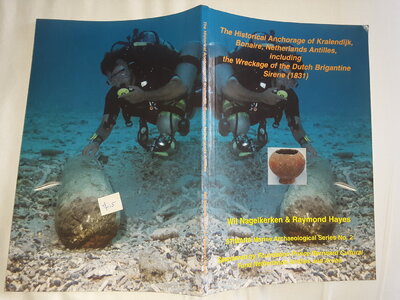
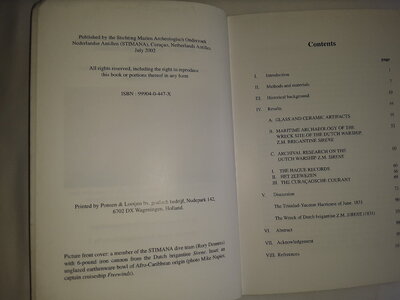
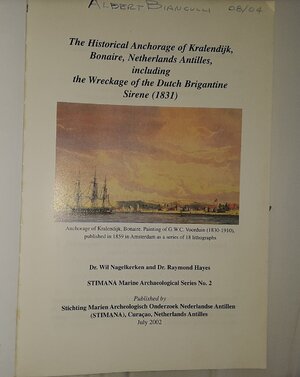
We are doing a major house cleaning and donating many items to Salvation Army, Goodwill, etc.
I worked on the deadeyes and the necessary iron work that goes with it. The tape with the lines under the wale show the angle of the iron work.
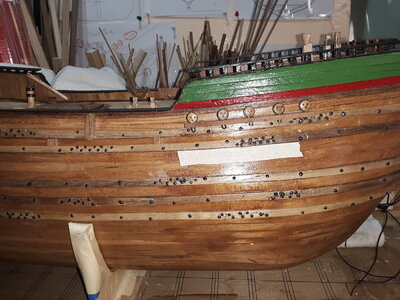
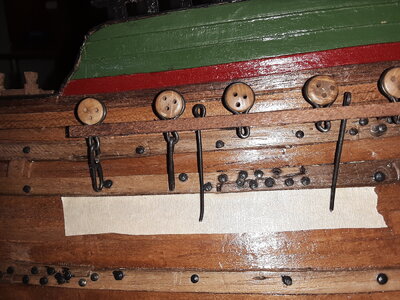
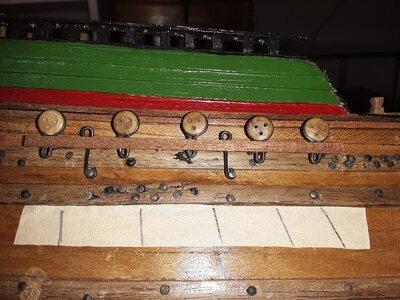
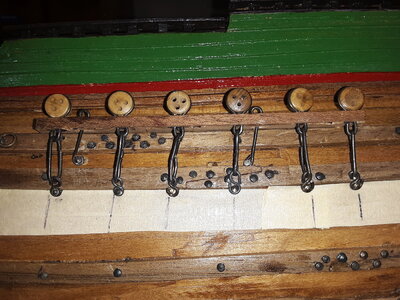
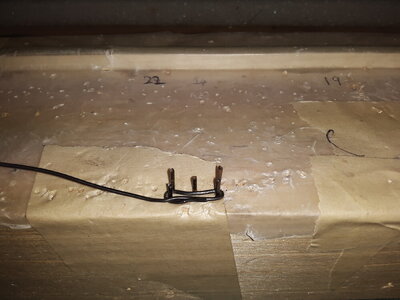
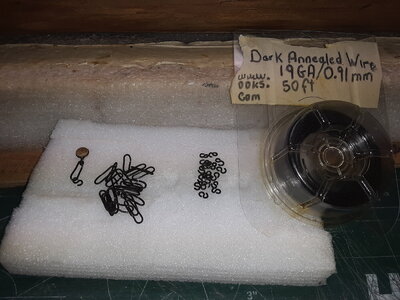
Marcus
Now that my wife has retired I have less time to work on the Fluit. Went on vacation to Bonaire, Netherlands Antilles. Snorkeling, sailing and checking out the island. There is only one shipwreck, the Dutch Brigantine Sirene from 1831.



We are doing a major house cleaning and donating many items to Salvation Army, Goodwill, etc.
I worked on the deadeyes and the necessary iron work that goes with it. The tape with the lines under the wale show the angle of the iron work.






Marcus
- Joined
- Mar 11, 2020
- Messages
- 213
- Points
- 143

2 small boats.
I have tried out several methods as well as what is described in the book of Mondfeld. I saw on the Dutch modelbouwforum.nl a method by Stephan that I am using. It has been challenging. Lots of trail and errors. I find it about as difficult as building the hull of the model itself. I am using Stephan's method.
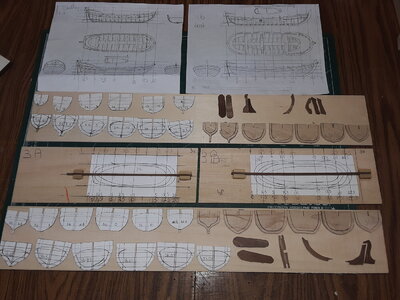
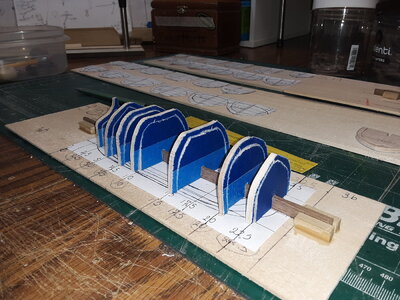
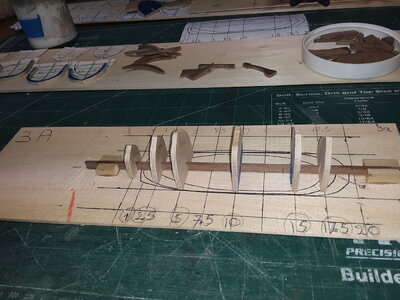
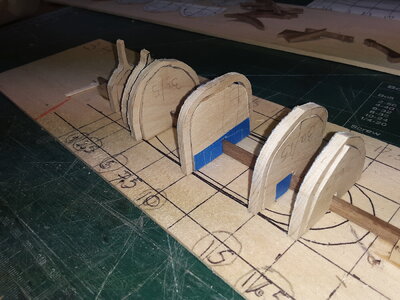
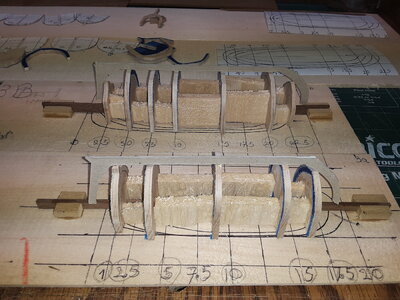
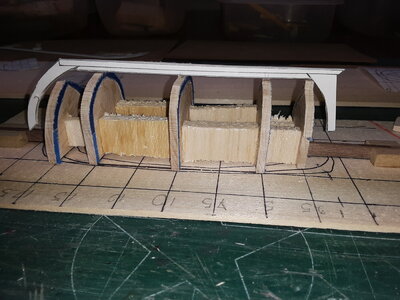
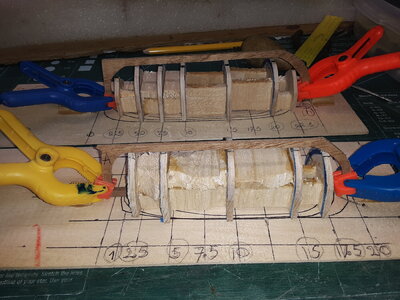
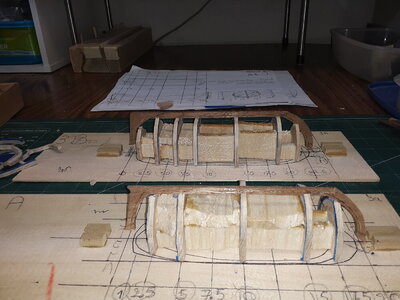
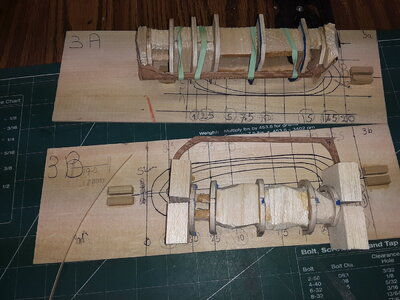
My woodworkers club had reps. from Diablo and Freud. The Diablo rep showed us a new type of sanding technology. It is a net made of a ceramic blend and does not clog or tear. It lasts longer that regular sandpaper and made in Switzerland.
Personally, it works great, better than anything I have used before. The 220 grit I use feels like the 100 grit regular sandpaper
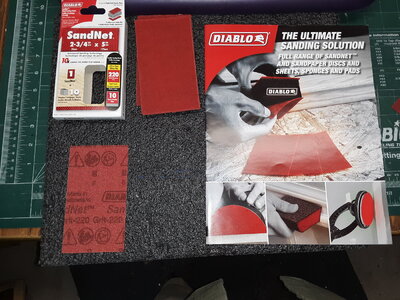
Marcus
I have tried out several methods as well as what is described in the book of Mondfeld. I saw on the Dutch modelbouwforum.nl a method by Stephan that I am using. It has been challenging. Lots of trail and errors. I find it about as difficult as building the hull of the model itself. I am using Stephan's method.









My woodworkers club had reps. from Diablo and Freud. The Diablo rep showed us a new type of sanding technology. It is a net made of a ceramic blend and does not clog or tear. It lasts longer that regular sandpaper and made in Switzerland.
Personally, it works great, better than anything I have used before. The 220 grit I use feels like the 100 grit regular sandpaper

Marcus
- Joined
- Mar 11, 2020
- Messages
- 213
- Points
- 143

Thanks for all the likes and comments.
Between the little vacations, the flower and the edible garden I find time to work on the small boats. I have the most difficulties with the smaller boat. The shape is a tough one. I decided to build both boats with 2 layers of planking as I made many mistakes planking the small one. (I don't know how people work in scales of 200 and up, mind boggling).
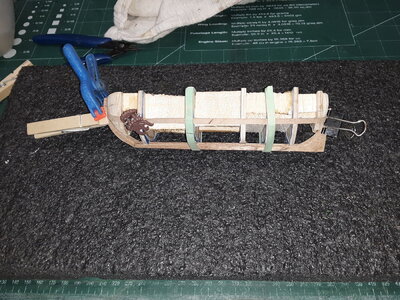
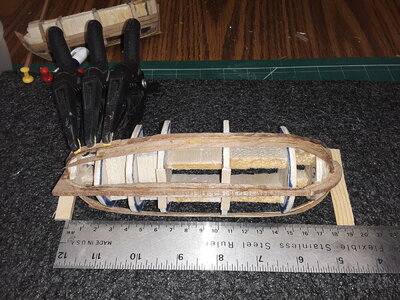
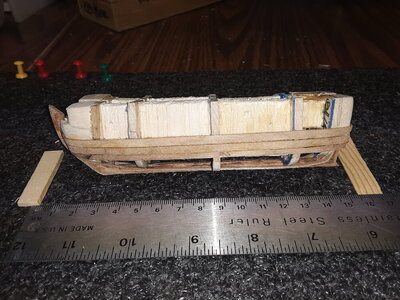
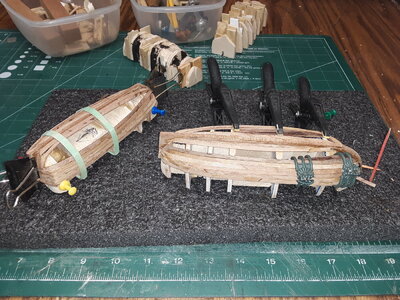
Both have the first layer of planking completed and have started on the second layer which should hide the mistakes I made on the smaller boat.
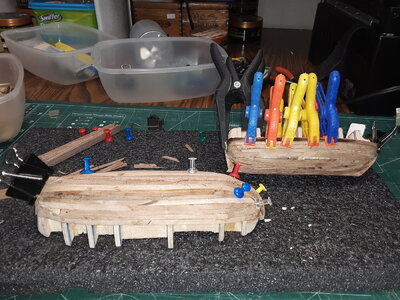
It is good that the smaller boat goes into the bigger boat and when I add 2 masts, 4 sails and the rigging you don't see much of the smaller boat. I am not sure if I am going to add the mast, sails and rigging to the boats. This may look like someone left a pile of junk on the deck and forgot to clean up.
What are the suggestions?
Marcus
Between the little vacations, the flower and the edible garden I find time to work on the small boats. I have the most difficulties with the smaller boat. The shape is a tough one. I decided to build both boats with 2 layers of planking as I made many mistakes planking the small one. (I don't know how people work in scales of 200 and up, mind boggling).




Both have the first layer of planking completed and have started on the second layer which should hide the mistakes I made on the smaller boat.

It is good that the smaller boat goes into the bigger boat and when I add 2 masts, 4 sails and the rigging you don't see much of the smaller boat. I am not sure if I am going to add the mast, sails and rigging to the boats. This may look like someone left a pile of junk on the deck and forgot to clean up.
What are the suggestions?
Marcus
Hallo @flying_dutchman2The Zeehaen, a Dutch fluit used by the Dutch explorer Abel Tasman. But first some historical background information of a Fluit.
Shipbuilders, skippers and other curious people, from near and from far, travelled to Hoorn in Noord Holland to look at the new ship. A prominent merchant, Pieter Janszoon Liorne, had turned his view of the ideal merchant vessel into reality. By the end of the sixteenth century there existed a ship type called a fluit, which had some specific characteristics.
Seen from the side a fluit looks just like any old three-masted sailing ship. The mainmast and the foremast have square sails and the aftermost mizzenmast has a triangular lateen-sail occasionally supplemented with some smaller sails on the bowsprit and mizzenmast.
The particularities of the fluit’s hull become apparent when seen from above or from astern. From above the outline of the hull appears as a rectangle box with slightly rounded corners. Seen in cross section the sides of the hull slope inwards, so-called ‘tumble-home’, which result in very narrow upper works. The rounded lower parts of the stern are crowned by a narrow flat transom, giving it a pronounced pear-shape. It might be that this shape, which stern-on gave the impression that the after works looked something like a thinly shaped glass, a flute, is the origin of the name.
The Dutch fluit was a classic merchant ship of the 17th century. It was built to be economical in operation, carrying the largest cargo and smallest crew possible. The rigging was designed to be sailed and operated with proportionally small crews (12 to 13) , and its narrow upper deck was designed to evade Danish customs dues when passing through the sound in to the Baltic, where duties were levied according to the size of the breadth of the deck.
There are several reasons for building a hull of this shape. Keeping the center of gravity low is perhaps the most obvious. The idea that the hull shape of the fluit was adjusted to cut costs probably derives from the general reputation of the Dutch merchants at the time. Creating a ship type that kept costs to a minimum becomes just another way to confirm their superiority and skill when it came to making profit.
The fluit was a total success. From the end of the 16th century to the mid 18th century fluits were amongst the most common type of merchant vessels in Northern Europe and the Baltic Sea. In the Dutch Golden Age, 80% of the ocean going vessels were fluits and were built at an average of 400 to 500 annually. They were easy and cheap to build thanks to standardization of design as well as a technological improvements, such as the sawmill, which was invented by the Dutch.
The fluit was a ‘multi-purpose’ vessel, a ship that with slight adjustments could meet a wide range of demands. Even if the term embraces a range of ships which share some important characteristics, there are variations with important differences. The size of fluits varied considerably. The smallest versions, sometimes referred to as the boot, were 86 feet at most (around 24m), whereas the largest versions were 140 feet (just over 39 m) and larger. Variations of the basic concept did not only affect the size, but included some special features connected to the trades in which these ships were used.
Noortsvaarders or Houthaalders - Woodhauler was developed with ports in the bow and stern for loading long beams and timbers, They were of about 300-350 tons, with simple hulls and an armament of small guns.
Ostervaarders, especially designed for the shallow harbours of the Baltic Sea.
Fransvaerders, Spaensvaerders and the Straetsvaerders, so called because they were used in the trade with France, Portugal or Spain and the Mediterranean (through the straits). From the exterior, they differed from the other varieties through the beakhead
The Vereenigde Oost-Indische Compagnie, VOC, (United East India Company), employed a number of fluits.
Fluits were also used as whalers which are easy to distinguish in depictions as they have davits on the sides for lifting whaling boats.
Next, a biography about Abel Tasman
we wish you all the BEST and a HAPPY BIRTHDAY

- Joined
- Mar 11, 2020
- Messages
- 213
- Points
- 143

Uwek and Heinrich, thanks for the well wishes.
Steef66, tanks and that is an interesting sounding dialect.
Marcus
Steef66, tanks and that is an interesting sounding dialect.
Marcus
- Joined
- Mar 11, 2020
- Messages
- 213
- Points
- 143

Thank you.Happy birthday Marcus,
wish you all the best and happiness
For dinner there will be ribeye for steak.
Marcus
Happy Birthday, Marcus!! 

Hallo @flying_dutchman2
we wish you all the BEST and a HAPPY BIRTHDAY

66 - a nice age - Enjoy your special day
Mit 66 Jahren, da fängt das Leben an - means - With 66 years, the life will start
we wish you all the BEST and a HAPPY BIRTHDAY

66 - a nice age - Enjoy your special day
Mit 66 Jahren, da fängt das Leben an - means - With 66 years, the life will start




